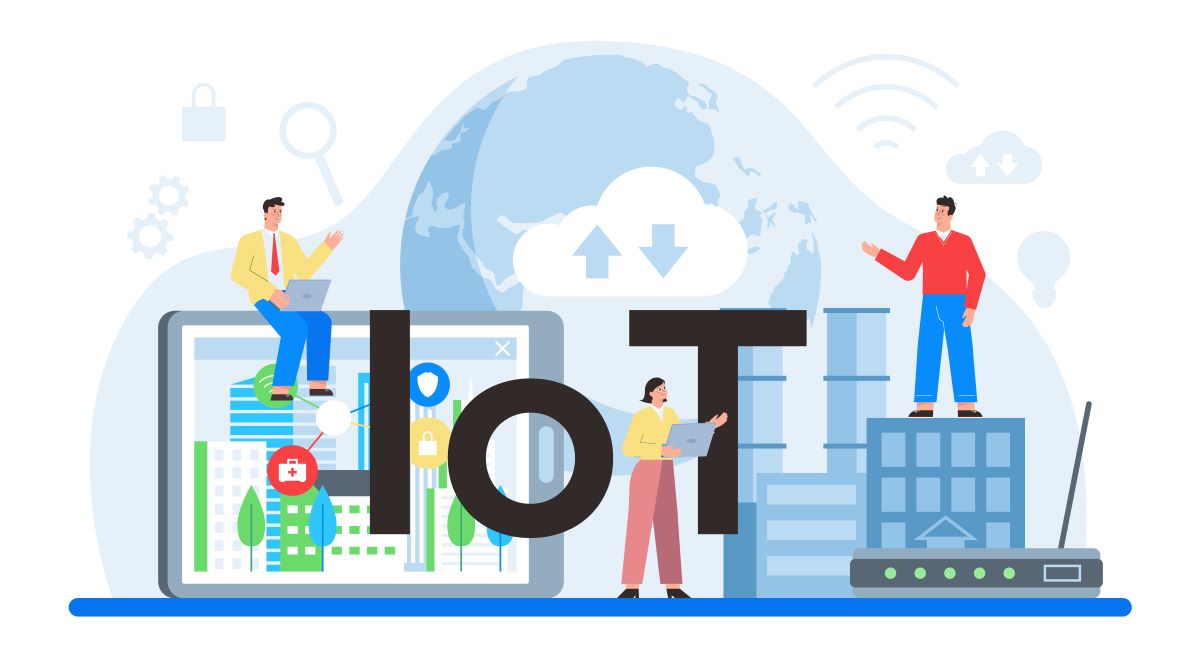
Building a Smarter Future: The Power and Potential of IoT
What is IoT?
The Internet of Things, also known as IoT, is a term that has emerged in the constantly changing technological landscape and has the potential to transform our world. With the Internet of Things, everyday devices like coffee makers, smartphones, and even clothing become interconnected players in a vast digital network.
This transformative concept serves as a bridge, elegantly connecting our physical environment with the digital realm and breathing life into objects that communicate, share information, and collaborate intelligently. As a result, we find ourselves on the cusp of a paradigm shift where the ordinary turns extraordinary, enhancing convenience, efficiency, and quality of life.
Unveiling the IoT landscape
A network of connected devices
IoT is primarily focused on connecting commonplace gadgets to the internet so they can exchange and collect data. It is all about giving everyday objects intelligence, from wearable fitness trackers that keep tabs on your health to smart thermostats that change your home’s temperature based on your preferences.
These gadgets create a huge, interconnected network that can exchange information in real time since they are outfitted with sensors, actuators, and network connectivity.
Enabling data-driven insights
The potential to produce enormous volumes of data through these linked gadgets is what makes them so beautiful. These statistics offer insightful information on customer behavior, business operations, and environmental factors. Businesses can use this data to optimize procedures, forecast trends, and make well-informed decisions. For instance, manufacturers can use predictive maintenance to stop equipment faults, while merchants can analyze customer behavior to improve inventory management.
Applications across industries
IoT in healthcare
Healthcare is one of the most promising industries where the Internet of Things is having a big impact. It is revolutionizing healthcare services through remote patient monitoring and smart medical equipment. Now, clinicians can access real-time data for accurate diagnosis and customized treatment regimens, while patients may be watched from the comfort of their own homes. This improves patient outcomes while lowering healthcare expenses.
Smart cities and urban development
Thanks to the Internet of Things, the idea of smart cities is becoming a reality. Cities may monitor energy consumption, improve trash management, and optimize traffic flow by integrating sensors into their urban infrastructure. Just a few examples of how IoT might improve urban living include smart streetlights that alter brightness based on foot traffic or parking systems that direct automobiles to open spaces.
Industrial IoT (IIoT) revolution
Industrial IoT is causing a revolution in sectors like manufacturing, agriculture, and logistics. Factory equipment performance can be tracked via connected sensors, enabling proactive maintenance to avoid expensive downtime. Farms may use the Internet of Things to improve irrigation and crop management, and supply chains can be made more effective by tracking and monitoring shipments in real-time.
Benefits and advantages
Enhanced efficiency and productivity
The potential of IoT to automate procedures and collect real-time data boosts production and efficiency across numerous industries. Businesses can improve resource allocation, decrease manual involvement, and streamline operations. This results in lower costs and higher output, which boosts the economy as a whole.
Personalized experiences
Today’s consumers demand individualized experiences, and the Internet of Things gives just that. Improves client engagement by customizing interactions to individual preferences, from intelligent assistants that anticipate your requirements to recommendation systems that make product suggestions based on your tastes.
Sustainability and resource management
IoT provides answers for sustainable resource management in a world facing environmental issues. Energy distribution may be optimized through smart energy grids, which can also cut down on waste and support renewable energy sources. Environmental sensors can keep an eye on the quality of the air and water, allowing for quicker response times to pollution issues. Technology-based sustainability contributes to preserving the environment for future generations.
Challenges to overcome
Data privacy and security
The security and privacy of the massive amounts of data being transferred are of utmost importance. Strong encryption, authentication procedures, and ongoing monitoring are necessary to guarantee that sensitive data is kept private and protected from cyber dangers.
Interoperability
Numerous gadgets from diverse manufacturers that frequently use numerous communication protocols make up the IoT ecosystem. When these gadgets must smoothly communicate, interoperability difficulties appear. For the Internet of Things to function together and be compatible, industry standards and protocols must be established.
Scalability
Scalability becomes a problem when linked devices continue to multiply exponentially. IoT systems need to be built to manage the rising demand for network bandwidth and data processing.
To Conclude
More than just a passing technology fad, the Internet of Things represents a profound paradigm shift that is redefining industries and altering how we connect with the outside world. It has obvious strengths and potential across industries, including manufacturing, healthcare, smart cities, and sustainable practices.
Even though there are difficulties, the rewards of increased effectiveness, customized experiences, and sustainable practices make the journey worthwhile. Accepting the possibilities of IoT as we advance into this linked future may, in fact, help us create a wiser, more creative world.
